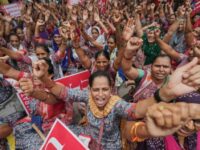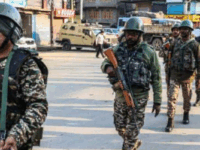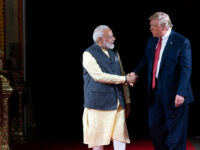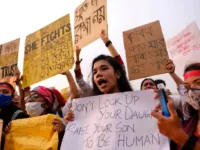Farmers Resume their Protest in “Dilli Chalo” march
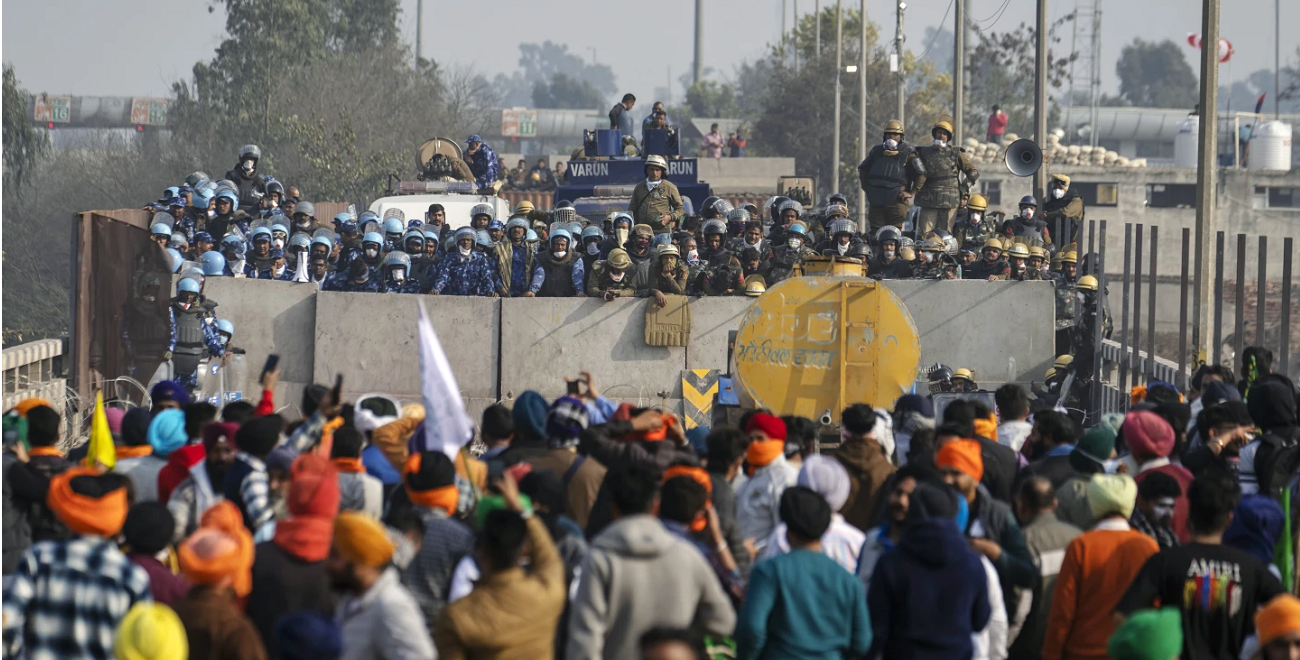
The New Delhi border looks like an international conflict zone with multiple layers of barricades, concrete blocks, barbed wire and iron nail spikes on the road. More than 50,000 paramilitary troops, equipped with sonic weapons, drones, tear gas and even lubricants to be poured on the road, have been deployed. The Modi regime is employing every available military manoeuvre in the book. All this is done to prevent the farmers’ “Dilli Chalo” protest march. The farmers have been forced to come out on the streets as the government has failed to deliver on its promises made in the aftermath of the 13-month-long farmers’ protest in 2020. The Samyukta Kisan Morcha and Kisan Mazdoor Morcha announced the “Dilli Chalo” (lets Go to Delhi) protest march which is supported by more than 200 farmers’ unions. Their demands are simple:
- Guaranteed Minimum Support Price for all crops through legislation
- Strengthen the Mahatma Gandhi National Rural Employment Guarantee Scheme
- Reinstitute the old pension scheme for wider coverage
- Ensure pension and social security for all workers (formal and informal)
- Provide 300 units of power free of charge for each farmer, for both domestic and farming use
- Implement comprehensive crop insurance for better risk management
- Increase existing pensions to Rs. 10,000 per month
These are not new demands. As a matter of fact, the Swaminathan Commission led by Bharat Ratna Prof. MS Swaminathan, the father of Green Revolution in India, recommended these very reforms in 2006.[1] However, these simple demands of the farmers are impossible to meet for the Modi government while protecting the interests of their corporate lords. Companies like Adani Agri Logistics have thousands of crores invested in the agriculture industry, and Ambani’s Reliance company has huge holdings as well, owning the largest Mango orchard in Asia . Having been given 45 days’ notice of the march, the government used the time to chalk out a war plan to counter the movement through military interventions. Even before the final meeting between the government delegation and the farmers on the eve of the march, Delhi was fortified. Section 144 was implemented, and internet, mass SMS, social media pages and websites have already been blocked in various parts of Punjab, Haryana and Uttar Pradesh. These are not the signs of a government which is interested in the welfare of the working class. The meeting was in reality a weak attempt to delay the movement.
The Modi regime’s intentions are very loud and clear considering the Special Commissioner of Police (Law and Order) Ravindra Yadav’s instructions to the police:”If they are coming aggressively, we have to show more aggression. Then only we can stop them. If they are aggressive, we need not be defensive. We have to fire tear gas shells, use lathis (baton) and save ourselves. This process may keep running for a day.”[2] The BJP has no desire or interest in the welfare of the working class. They are treating farmers like criminals, attacking them with tear gas and sonic weapons which will not only incapacitate them temporarily but will cause permanent damage. Clearly, the government is waging a war on its own citizens, the very people who are responsible for feeding the country.
In spite of the government’s dirty tactics, the farmers are determined to continue the movement. They are ready for the long haul. Working class Indians have never shied away from a fight for their rights. Like last time, the farmers have come prepared with rations and fuel for at least 6 months. These working-class farmers might not have the sophisticated weaponry of the ruling class, but they are using everything they can to their advantage. The farmers are equipped with over 5,000 tractors to disassemble the concrete barriers, Multani mitti (fullers earth) to counter the after effects of tear gas and kites to tangle the drones. This may not be enough, but their collective protest can shake the core of the government and Delhi is well aware of it. With national elections coming up, Modi is nervous that this movement could disrupt the ruling party’s narrative about its own political invincibility, and of the supposed economic success story it has presided over.
The government is preemptively arresting farmers and farm labourers to prevent them from joining the protest march from other parts of the country–Maharashtra, Madhya Pradesh, Karnataka, Bihar, Orisa and West Bengal to name a few. Farmers are forced out of trains and put into jails. 300 farmers from Karnataka, who were on their way to the protest site were arrested. As a matter of fact, in Delhi and Haryana certain sections have been cleared out to make makeshift jails to keep arrested farmers. This is the very same BJP which paid people to join the communal movement to destroy Babri Masjid in 1992 and recently encouraged and facilitated people to attend the inauguration of the Ram Mandir.
The government’s priorities are very clear. All policies and actions should only benefit the ruling class. Hence, it is willing to forgive debt of mega corporations, invest millions of dollars on pride projects, and temple building. However, the same considerations are never extended to the working-class farmers and farm labourers. The outstanding debt of farmers is a blip compared to the corporate debts that the government had previously forgiven.
The government doesn’t yet seem to understand that it is playing with fire. Whenever the working class has come together, even the most powerful state machinery has been brought to its knees. However, in our condemnation of the Modi regime for the state repression and exploitation of farmers, we should not forget that it is not something exclusive to the Modi government. All previous governments both at the centre and at the state have always enacted policies and actively worked against the interest of the working class. The hollow words of support by parties like Congress, Shiv Sena, TMC, CPIM are belied by their own history. These same parties were actively persecuting and beating farmers be it during the Singur protest (CPIM), Pune Long March (Shiv Sena), or the Deucha-Pachami coal mines protests (TMC) to name a few. Seems like Rahul Gandhi has forgotten that it was his own party which had refused to implement the Swaminathan Commission recommendations in 2006. The then Congress government felt it was not economically feasible and will be counter-productive to have MSP.[3] The State government in Punjab, ruled by the Aam Aadmi Party (AAP), did not object to the recent imposition, by the Union government, of a British era-law to block internet across several districts of the state to quell the farmers’ movement. A capitalist government is never an ally to the working class. They have one and only loyalty, that is to the ruling class. We cannot put our hopes in the promises of false saviours.
The farmers have clearly learned from the last round of protests in Delhi 2020-2021, and are calling for solidarity across the Indian and global working class. Already, a chakka jam was organised across the country, and calls were issued for a Bharat Bandh on 16th February.The trade unions enthusiastically heeded the call. Private and government offices and village offices remained closed. Transportation, agricultural activities, Mahatma Gandhi National Rural Employment Guarantee Act (MGNREGA) rural works and rural industrial and service sector institutions also remained closed. If the movement is to be successful, it must make these vitally important connections, linking their cause to the Indian and global working class and the struggle against exploitation and oppression of all workers.The attacks on the Farmers’ in India is not an isolated event. The agricultural community across the globe is under attack. In Europe, farmers from Spain to Poland, Germany to Greece are out on the street protesting against the economic, regulatory and green policies approved by the EU parliament, which along with the increasing trend towards industrialisation of agriculture with a growing grip of agri-business has left the rural agricultural community struggling to survive. France and Belgium are currently witnessing a series of major protests organised by the various agriculture unions.. It is in the DNA of the ruling class to suppress these movements and often the leadership in these trade unions align themselves to the ruling class rather than the working class as evident in the leadership of France’s FNSEA union.[4]
Rank-and-file workers in the major trade unions must take up these demands and force the leadership to join the solidarity movement. Permanent linkages on a class basis must be made while taking up the demand for further advances such as nationalisation of the agriculture sector and land reform to break up the monopoly of big landlords. These demands are equally beneficial for the working class in other sectors both organised and unorganised. Members should force the leadership of their trade unions not only to stand in solidarity with the farmers’ movement but also join the movement to implement pension schemes, robust social security and health insurance for workers across all sectors. The working class’ biggest strength is our labour and by withholding labour we can successfully force the ruling class’ hand. Repeatedly journalists and critics of the government have faced brutal police repression. As recently as 2023, 60 protesters were dragged by Delhi Police for participating in the Free Palestine movement. Social activist Umar Khallid, one of the leaders of the Anti-CAA and NRC movement is still rotting in jail without trial. These are all politically motivated arrests to suppress the voices of the working class. The movement of farmers needs to link with the nationwide and global working class while taking up these demands as part of a wider program for and of the working class. The only way we can win this struggle is if the farmers’ union and trade unions across the globe come together and stand in solidarity with each other. Together, we can win this!
[1] https://www.firstpost.com/explainers/farmers-protest-what-is-the-swaminathan-commission-what-did-it-recommend-13726532.html
[2] https://www.hindustantimes.com/india-news/farmers-protest-live-chalo-delhi-march-punjab-haryana-up-noida-kisan-andolan-today-13-february-2024-101707775882798.html
[3] https://www.firstpost.com/explainers/farmers-protest-what-is-the-swaminathan-commission-what-did-it-recommend-13726532.html
[4] https://internationalsocialist.net/en/2024/02/farmer-protests

